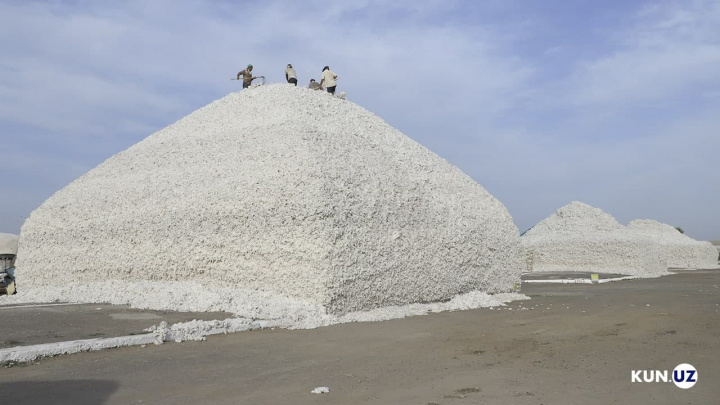Evolving U.S. policy on Afghanistan: From counterterrorism to strategic engagement
The return of the Taliban to power has elevated the significance of the Afghan issue. This is especially evident in the transformation of U.S.-Afghan relations following the withdrawal of American military forces from the country. An analysis of U.S. foreign policy toward Afghanistan reveals four distinct phases or approaches to the Taliban regime. Each of these approaches reflects the dynamic and diverse perspectives within the American establishment on the Afghan issue.

War on terror
The first phase or approach was marked by the continuation of the fight against international terrorism, albeit outside the framework of direct military presence in the country. The Biden administration announced the end of the war in Afghanistan, yet counterterrorism operations persisted. A notable example of this approach was the 2022 elimination of al-Qaeda leader Ayman al-Zawahiri on Afghan soil. Thus, Afghanistan’s relevance in the U.S. foreign policy agenda was predominantly defined through the prism of counterterrorism.
Political disengagement
The second phase was characterized by a sharp decline in political engagement and a diplomatic boycott of Afghan affairs. The United States adopted a strategy of political disengagement and strategic patience, hoping for internal transformations within Afghanistan’s ruling structures and the Taliban regime itself. As a result, the U.S. ceased its involvement in major infrastructure and economic projects, many of which it had originally initiated. These include the TAPI gas pipeline project, the CASA-1000 energy route, and the Trans-Afghan transport corridor. An exception to this disengagement was the provision of humanitarian aid by the U.S. Agency for International Development (USAID). During this phase, Washington’s interaction with the Taliban regime was carried out through intermediaries, particularly via Qatari mediation.
The Trump administration
The new administration of Donald Trump, despite its relatively brief tenure, exhibited a dual approach to the Afghan issue. Elements of its policy toward Afghanistan appear to have been influenced by the logic of Trump’s electoral campaign, which was rooted in the slogan “Make America Great Again”. On the other hand, U.S. military circles, guided by rational analysis, advocated for a strategy aimed at reinforcing American global leadership and maintaining presence in key geostrategic centers – one of which Afghanistan still represented.
While the first few months of the year (from January to mid-March) were marked by rhetoric aligned with campaign logic, by the end of March, the second direction – one shaped by strategic pragmatism – became dominant. As a result, the United States initiated direct contacts with Taliban representatives, signaling a new trend in bilateral relations.
MAGA
From the outset of his presidency, Donald Trump issued a series of strong statements directed at the Taliban. These pronouncements were largely shaped by the logic of his campaign, during which he criticized the Biden administration for undermining U.S. prestige in handling the Afghan issue. However, upon assuming office, Trump was faced with the dual challenge of both revising U.S. policy toward Afghanistan and remaining consistent with his campaign rhetoric to satisfy his electorate.
In this context, the Trump administration undertook several steps aimed at demonstrating a tough stance on Afghanistan:
- The Trump administration suspended international aid, affecting Afghanistan and exacerbating the country’s humanitarian crisis.
- Trump demanded the return of $7 billion worth of U.S. military equipment left behind after the withdrawal of troops. As well as he called for the return of the Bagram airbase, claiming it was under Chinese control.
- White House officials criticized the Taliban's repressive policies, emphasizing human rights violations and demanded the release of American hostages held by the Taliban.
All of these actions fit within Trump’s broader MAGA strategy, aimed at restoring U.S. authority and influence on the international stage. However, despite the administration’s tough rhetoric, these measures appeared to fall short of their intended results, prompting a reassessment of Washington’s approach to Afghanistan.
Direct contact
At this stage, the U.S. administration appears to have altered its methods of engagement and initiated direct dialogue with representatives of the Taliban. This is evidenced by the visits of former U.S. Special Representative Zalmay Khalilzad and U.S. Presidential Envoy for Hostage Affairs Adam Boehler, who held talks in March of this year with the Taliban’s Foreign Minister, Amir Khan Muttaqi. During these meetings, potential areas of cooperation were discussed, and agreements were reached that led to the release of American citizen George Glazmann, who had been held captive in Afghanistan for over two years.
One possible incentive behind the U.S. shift toward direct engagement with the Taliban may be the growing rapprochement between Afghanistan and China. After the end of the two-decade U.S. military presence, Washington effectively ceded influence to Beijing, allowing China to entrench itself as Afghanistan’s primary economic partner. In this context, the U.S. resumption of contact with the Taliban can be seen both as a reaction to China’s moves and as a recognition of Afghanistan’s enduring strategic importance in the eyes of Washington.
Taliban’s response
In its dialogue with the United States, Afghanistan does not exhibit the typical inferiority complex of smaller nations. The Taliban seeks to establish relations on an equal footing. They categorically reject a number of demands put forth by the Trump administration. In particular, they have strongly opposed the demand for the return of military equipment left behind by the U.S. after its withdrawal. According to the Taliban, this equipment is now the property of the Afghan state and is not subject to repatriation. Moreover, they consider it to be war trophies acquired through victory.
For its part, Washington has informally expressed a willingness to consider a potential exchange of military equipment for Afghanistan’s frozen foreign assets. However, the Taliban have also rejected this proposal. They argue that the financial assets in question belong not to the government, but to the Afghan people, and therefore must be returned unconditionally.
Possible scenarios
Based on the current dynamics of U.S.-Afghan relations, two potential scenarios for their future development can be outlined. The first scenario envisions a strategy in which the United States adopts a wait-and-see approach, aiming for a transformation within Afghanistan’s political elite. Internal divisions within the Taliban leadership – particularly the disagreements between Supreme Leader Haibatullah Akhundzada and Acting Interior Minister Sirajuddin Haqqani – could work to Washington’s advantage. Unlike Akhundzada, who adheres to a conservative governance model rooted in strict ideological principles, Haqqani appears to adopt a more pragmatic stance. Should Haqqani gain greater influence, new opportunities for compromise with international actors, including the United States, could emerge. In such a case, Afghanistan might be willing to make certain concessions in exchange for economic benefits and partial political recognition by the international community.
The March 2025 cancellation of the $10 million reward for information leading to the capture of Sirajuddin Haqqani signals a potential U.S. openness to selective engagement with Taliban representatives who show flexibility in foreign policy matters. In this context, it may serve as both a diplomatic gesture and a component of a broader negotiation strategy, potentially including discussions around the return of U.S. military equipment.
Another possible scenario suggests that even if Washington fails to secure the return of military equipment, it may use Afghanistan's frozen assets as a tool of leverage. Specifically, the United States could consider unfreezing these assets on the condition that Chinese influence in Afghanistan is reduced. Political distancing by Kabul from Beijing and a reorientation toward cooperation with Washington or alternative partners – such as India – could be seen as part of a broader U.S. strategy to contain China.
Given its strategic geographic location, Afghanistan plays a pivotal role in the continent’s transportation and logistics networks. As a result, the country is drawing increasing interest from China within the framework of the Belt and Road Initiative – an expansion that contradicts U.S. interests in the region. In this context, Washington may seek to employ economic instruments to limit China's influence, using financial leverage as a means of guiding Kabul’s foreign policy orientation.
Uzbekistan bridge
In the process of re-establishing U.S.-Afghanistan relations, Uzbekistan can serve as a platform for mediation. Undoubtedly, following numerous accusations against the Taliban, the United States cannot fully restore ties with the movement. This process will require time, mediation, and multilateral formats. In this context, the format of U.S.-Uzbekistan cooperation may gain increased significance.
Firstly, the United States and Uzbekistan are strategic partners.
Secondly, both countries have prior experience cooperating on Afghan issues. During the U.S. military presence in Afghanistan, Uzbekistan provided an airbase. When American forces withdrew, the U.S. left behind part of its military equipment – specifically, 22 airplanes and 24 helicopters, most of which are still located in Uzbekistan, reflecting a level of trust between the two sides.
Thirdly, when the Trump administration demanded the return of U.S. military equipment from the Taliban and was met with refusal, Uzbekistan handed over seven Black Hawk helicopters that had been left on its territory. In doing so, Uzbekistan assisted the Trump administration in demonstrating to its electorate that the repatriation of U.S. military assets from Afghanistan was underway, thereby helping to preserve its political reputation.
Fourthly, Uzbekistan and the United States share similar views on Afghanistan. Both nations regard it as part of Central Asia and link security and stability to prospects for economic development. This commitment was reaffirmed by the President of Uzbekistan at the first “Central Asia – European Union” summit held in April 2025, where he emphasized the need for Afghanistan’s active participation in major economic initiatives.
Fifthly, Uzbekistan is currently one of Afghanistan’s two closest partners, along with China. This diplomatic advantage could be valuable for the United States in the context of the Afghan issue.
Thus, Uzbekistan stands out as one of the United States’ potential partners in restoring ties with Afghanistan. Tashkent’s position is grounded in the necessity of a coordinated international approach to Afghanistan. In this regard, Uzbekistan would welcome Washington’s initiatives related to this country.
Conclusions
Overall, the U.S. strategy toward Afghanistan has developed in an uneven and inconsistent manner, likely due to the absence of a clearly articulated long-term strategic vision from Washington. One of the key factors contributing to this uncertainty may be doubts about the stability of the Taliban’s rule, possibly tied to ongoing internal divisions within the Taliban leadership.
Another potential cause is the growing activity of terrorist groups such as ISIS-Khorasan and Tehrik-e-Taliban Pakistan (TTP). In this context, the U.S. perceives the Taliban as weak in terms of neutralizing threats from these organizations, as well as the potential for covert ties or informal support from certain members of the movement.
A third significant factor remains the issue of human rights, including the rights of women and girls. Despite the possibility of more flexible rhetoric on this issue from the Trump administration, the broader U.S. foreign policy establishment cannot fully ignore this aspect.
All these factors strengthen Washington’s doubts about Kabul’s reliability as a potential partner, which, in turn, affects the formation and implementation of subsequent U.S. actions concerning Afghanistan.
Islomkhon Gafarov,
PhD in political science, Senior research fellow,
Centre for Afghanistan and South Asian Studies,
Institute for Advanced International Studies
Related News

13:44 / 06.08.2025
Business visits from Afghanistan to Uzbekistan surge amid Termez trade zone reforms

18:16 / 04.08.2025
Uzbekistan in talks to import cotton from the U.S.

18:10 / 04.08.2025
Uzbek man sentenced for joining Russian military in Ukraine war

16:26 / 04.08.2025



